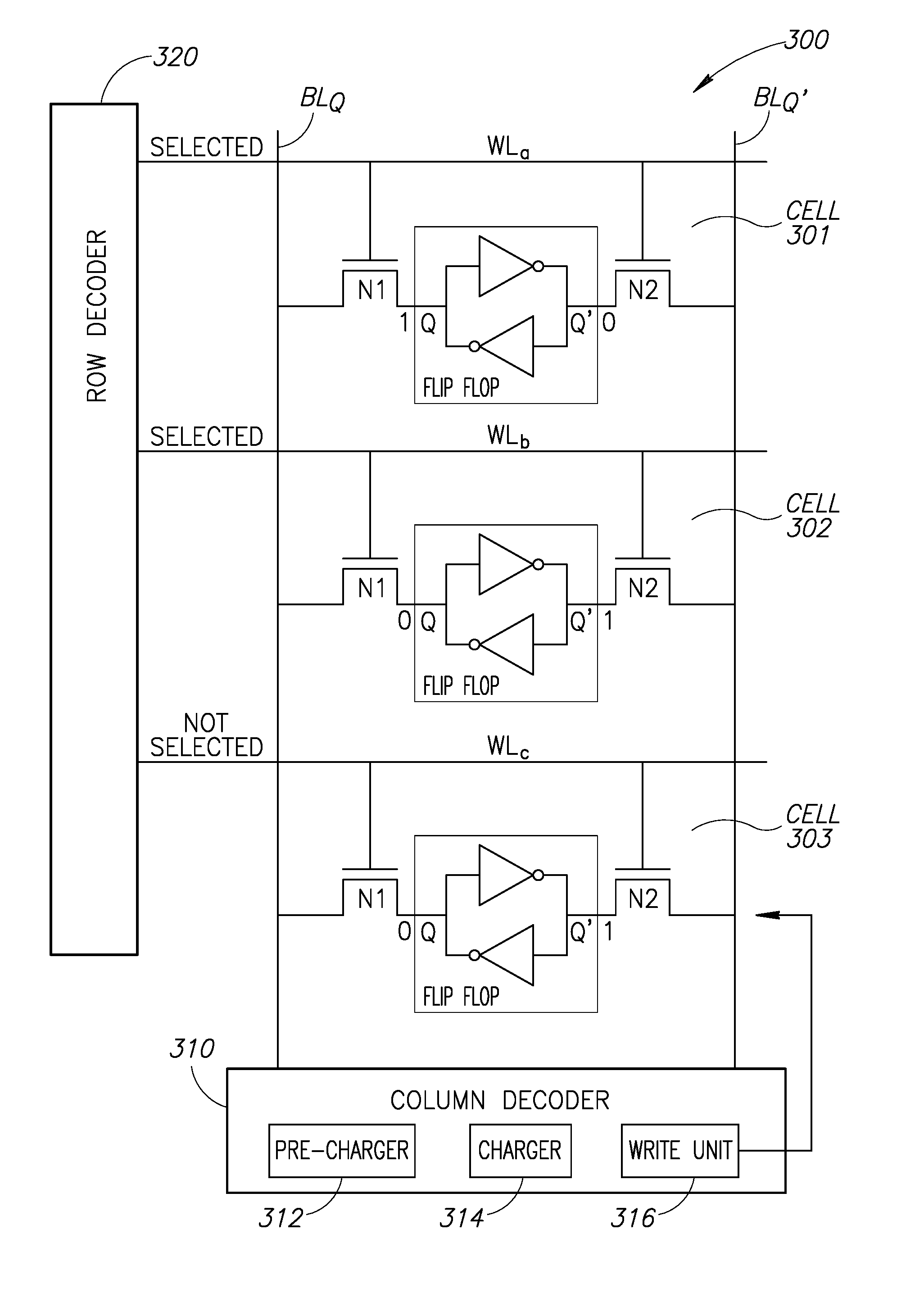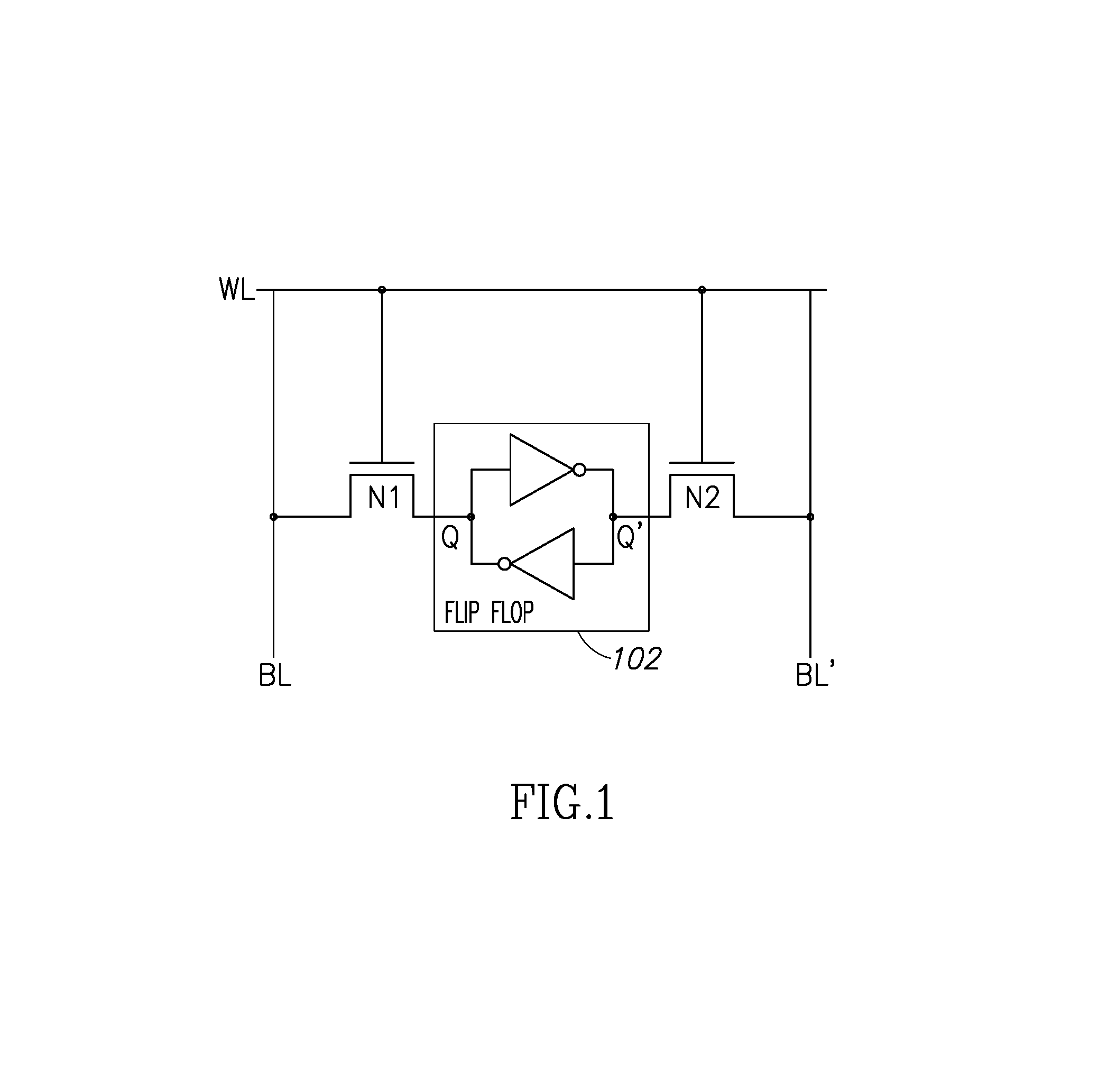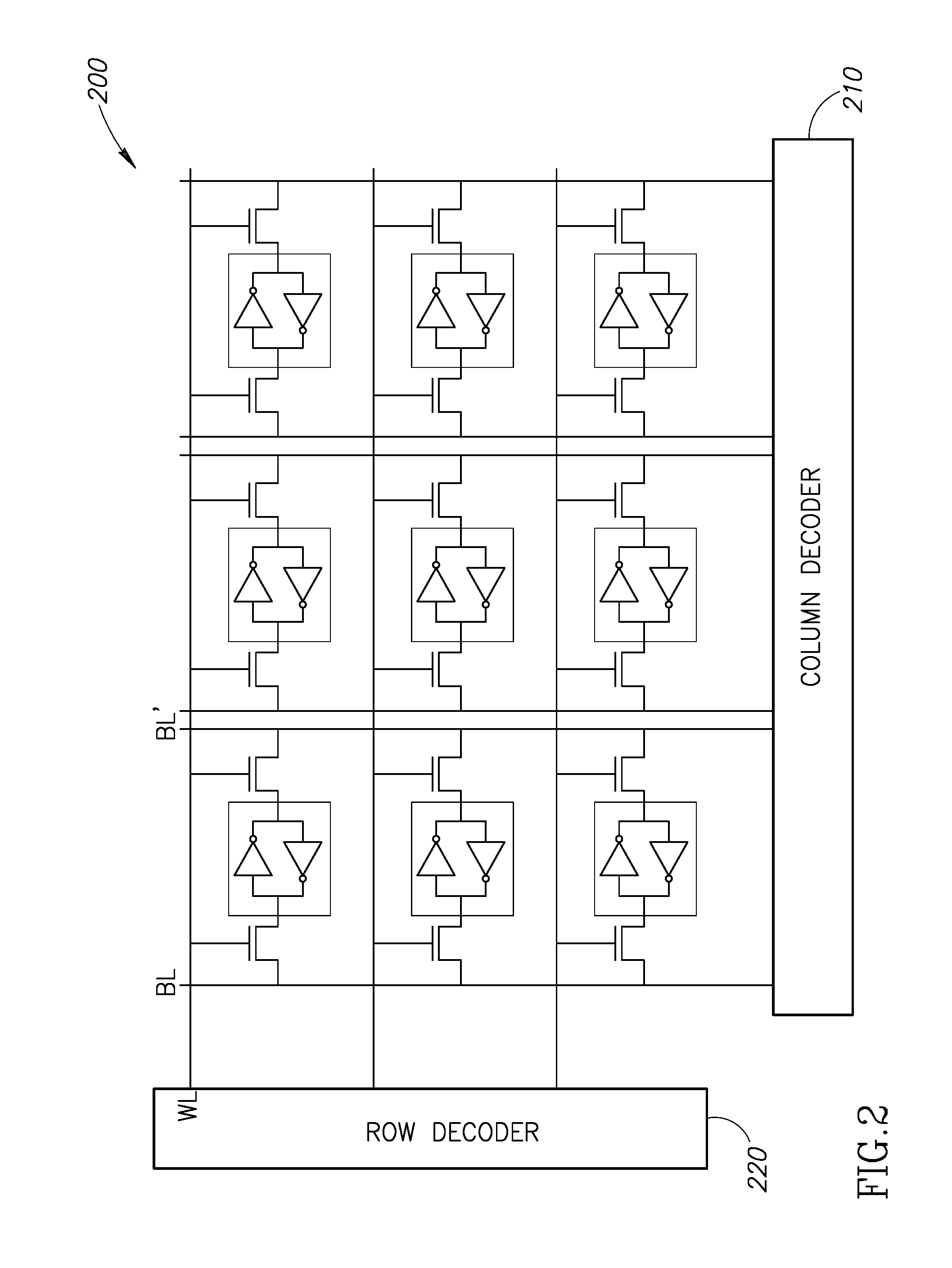SRAM multi-cell operations
a multi-cell, multi-cell technology, applied in the field of memory cells, can solve the problems of long time to complete, the speed of the bus not increasing at an equal pace, and the intensive reading and writing of data from and to memory during computation
- Summary
- Abstract
- Description
- Claims
- Application Information
AI Technical Summary
Problems solved by technology
Method used
Image
Examples
Embodiment Construction
[0031]In the following detailed description, numerous specific details are set forth in order to provide a thorough understanding of the invention. However, it will be understood by those skilled in the art that the present invention may be practiced without these specific details. In other instances, well-known methods, procedures, and components have not been described in detail so as not to obscure the present invention.
[0032]Applicant has realized that the standard 6T SRAM (Static Random Access Memory) memory array may be used more efficiently by enabling concurrent multi cell operations rather than the single row access per computing cycle of standard 6T SRAM memory arrays.
[0033]In accordance with an embodiment of the present invention, multiple rows are accessed in each computation cycle, resulting in the ability to perform multiple cell operations, such as a multi-cell write operation and a multi-cell computation.
[0034]Reference is now made to FIG. 1, which illustrates a stan...
PUM
 Login to View More
Login to View More Abstract
Description
Claims
Application Information
 Login to View More
Login to View More - R&D
- Intellectual Property
- Life Sciences
- Materials
- Tech Scout
- Unparalleled Data Quality
- Higher Quality Content
- 60% Fewer Hallucinations
Browse by: Latest US Patents, China's latest patents, Technical Efficacy Thesaurus, Application Domain, Technology Topic, Popular Technical Reports.
© 2025 PatSnap. All rights reserved.Legal|Privacy policy|Modern Slavery Act Transparency Statement|Sitemap|About US| Contact US: help@patsnap.com



